
10.15178/va.2018.145.97-111
RESEARCH
ANALYSIS ACADEMIC OFFERING OF THE MAIN MOOC PLATFORMS (MASSIVE OPEN ONLNE COURSE) AND ITS IMPORTANCE IN THE 21st CENTURY
IMPORTANCIA DE LA OFERTA ACADÉMICA DE LAS PRINCIPALES PLATAFORMAS MOOC (MASSIVE OPEN ONLINE COURSE) PARA LAS CIENCIAS ADMINISTRATIVAS
A IMPORTÂNCIA DA OFERTA ACADÊMICA DAS PRINCIPAIS PLATAFORMAS MOOC (MASSIVE OPEN ONLINE COURSE) PARA AS CIÊNCIAS ADMINISTRATIVAS
Marjorie Acosta-Véliz1 Magíster en Administración y Dirección de Empresas, Ingeniera Comercial Especialidad en Finanzas, Especialista en Evaluación de Proyectos y Gestión Directiva, Docente de la Facultad de Ciencias Administrativas en la Universidad de Guayaquil, Ecuador
Marjorie Jiménez-Cercado1
1University of Guayaquil. Ecuador
ABSTRACT
This study analyzes the academic offer of the so popular mass courses open online from the point of view of its contribution to the sciences and especially to the administrative sciences, starting with a look at the current situation of mass online courses at a global level And then analyzing their academic composition, considered as a reference of these courses for their importance, diversity, quality and content for all users who can access this medium for their educational process and personal development. The analysis is based on the holistic relevance of the relations of the educational institutions that are part of this portal and its factors of relationship and strengthening within the study network, which consolidates the network of themes that each institution offers. For the presentation of the results inductive and deductive methodology with quantitative approach through surveys to the students defined in the control group, achieving results that prove that this disruptive innovation of higher education contributes to the strengthening of students of careers related to The administrative sciences and they are willing to make this practice part of their curriculum.
KEY WORDS: Certification; E-Learning; Higher Education; Teaching-Learning; MOOC; New Technologies; Academic Offer.
RESUMEN
Este estudio analiza la oferta académica de los tan popular cursos masivos abiertos online desde el punto de vista de su aporte a la ciencias y en especial a las ciencias administrativas, iniciando con una mirada a la situación actual de los cursos masivos en línea a nivel global y luego analizando su composición académica, considerada como referente de estos cursos por su importancia, diversidad, calidad y contenidos para todos los usuarios que puedan acceder a este medio para su proceso educativo y de desarrollo personal. El análisis se fundamenta en la pertinencia holística de las relaciones de las instituciones educativas que forman parte de este portal y sus factores de relación y fortalecimiento dentro de la red de estudios, lo cual consolida la red de temáticas que cada institución ofrece. Para la presentación de los resultados metodología inductiva y deductiva con enfoque cuantitativo a través de encuestas a los estudiantes definidos en el grupo de control, logrando resultados que comprueban que esta innovación disruptiva de la educación superior aporte al fortalecimiento de los estudiantes de las carreras relacionadas con las ciencias administrativas y ellos están dispuestos a hacer de esta práctica parte de su programa de estudios.
PALABRAS CLAVE: Certificación; E-Learning; Educación Superior; Enseñanza-Aprendizaje; MOOC; Nuevas Tecnologías; Oferta Académica.
RESUME
Este estudo analisa a oferta acadêmica dos tão populares cursos massivos abertos online desde o ponto de vista de seu aporte à ciências e em especial às ciências administrativas, iniciando com uma visão à situação atual dos cursos massivos à nível global e logo analisando sua composição acadêmica, considerada como referente de estes cursos por sua importância, diversidade, qualidade e conteúdo para todos os usuários que possam aceder a este meio para seu processo educativo e de desenvolvimento pessoal. A analises se fundamenta na pertinência holística das relações das instituições educativas que formam parte deste portal e seus fatores de relação e fortalecimento dentro da rede de estudos, o qual consolida a rede de temáticas que cada instituição oferece. Para a apresentação dos resultados metodologia indutiva e dedutiva com enfoque quantitativo através de encostas aos estudantes definidos no grupo de controle, logrando resultados que comprovam que esta inovação disruptiva da educação superior aporte ao fortalecimento dos estudantes das disciplinas relacionadas com as ciências administrativas e eles estão dispostos a fazer de esta pratica parte de seu programa de estudos.
PALAVRAS CHAVE: Certificação; E-learning; Educação Superior; Ensino-aprendizagem; MOOC; Novas tecnologías; Oferta acadêmica.
Correspondence
Marjorie Acosta Véliz: University of Guayaquil. Ecuador.
http://orcid.org/0000-0002-9462-1881
marjorie.acostav@ug.edu.ec
Marjorie Jiménez Cercado. University of Guayaquil. Ecuador.
http://orcid.org/0000-0003-1404-6731
jimenezcme@ug.edu.ec
Received: 07/09/2018
Accepted: 23/10/2018
How to cite this article:
Acosta Véliz, M., and Jiménez Cercado, M. (2018). Analysis academic offering of the main MOOC platforms (massive open online course) and its importance in the 21st century. [Importancia de la oferta académica de las principales plataformas MOOC (massive open online course) para las ciencias administrativas]. Vivat Academia. Revista de Comunicación, 145, 97-111. doi: http://doi.org/10.15178/va.2018.145.97-111
Recovered from http://www.vivatacademia.net/index.php/vivat/article/view/1097
1. INTRODUCTION
The society of the 21st century continues to live a constant transformation and adaptation in the way they develop their social, economic, professional and family activities. Education has had a 360 degree turn since now anyone can prepare without attending a classroom. The new educational environments have transformed the educational processes, showing the relevance of making an analysis that makes it possible to visualize the scope of these new forms of education.
Based on these aspects, where the creation of knowledge is based on the establishment of connections, it is clear that the greater the number of nodes, the more learning possibilities there are in a given course. Therefore, the change from closed educational platforms to open learning environments has meant that thousands of people from all over the world can follow different educational initiatives as indicated by Medina and Aguaded (2013).
Virtual education through online courses, as it is now known, was born in 2008 when Stephen Downes and George Siemens participated in the Desire21Learn conference and, tired of discussing the applications of connectivism, they thought that the best way to understand how learning works online was to create a course of this type and they immediately designed, therefore, their first online course CCK08 «Connectivism and Connective Knowledge». By then, 2,300 students signed up and Dave Cormier and Bryan Alexander suggested naming it a “massive open online course” or MOOC. (Bartolomé & Steffens, 2015). “Siemens’s connectivism proposal is based on the fact that knowledge is something that does not reside in the mind of a person but is distributed through networks” (TEC, 2014, p. 7).
MOOC platforms, like other elearning products called educational software 3.0. and that includes, for example, the so-called serious games from the Digital Gamebased Learning, are a response to the need to use innovative methodologies to achieve impact training in the field of teaching-learning processes in virtual learning environments , according to Prensky (2010) mainly in terms of the degree of active participation provided to the subject of learning
According to the analysis carried out by Vásquez (2013), they are based on the acquisition of contents and are based on an evaluation model very similar to traditional lessons (with more standardized, self-assessed and concrete tests). Normally they are carried out by professors of prestigious universities; what generates their greatest attraction. The great problem of this type of MOOCs is the treatment of the student in a massive way (without any type of individualization) and the methodological format already overcome of trial-error in the evaluation tests.
According to Shah (2016) the global statistical data show that in 2016 around 58 million students enrolled in these courses, more than 700 universities participate and 6850 courses were given, this distribution of millions of students is broken down in the following Table 1 with the top of the 5 largest platforms in the world:
Table 1. Registered providers and students

Source: Shah (2018)
Statistics continue to grow worldwide and show the following results in relation to the growth since 2012, with only 20 courses to start 2017, with 6850 courses available in different platforms worldwide, as described in Graph 1.
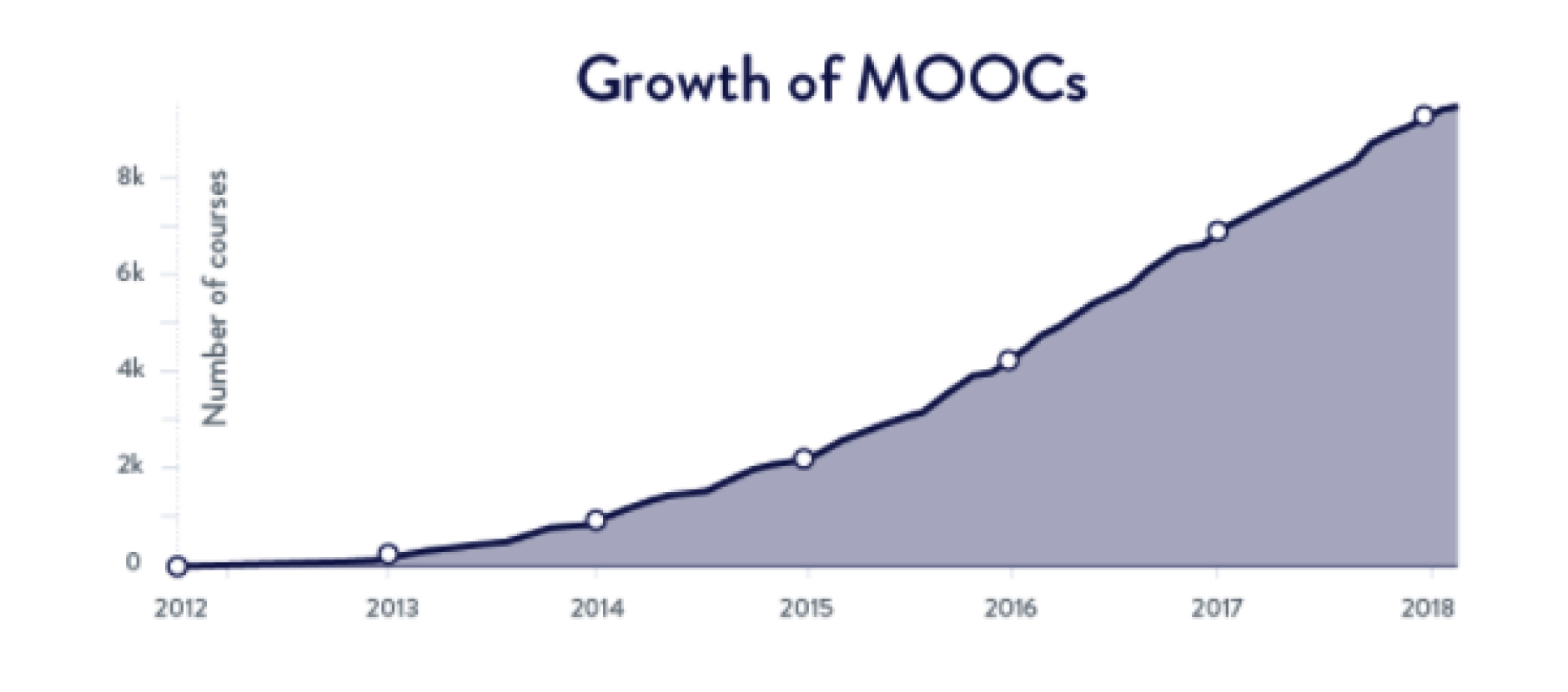
Graph 1: Growth of MOOCs. Source: Shah (2018)
Another relevant factor is to know the types of subjects of the MOOCs academic offer, mainly from the following areas: administration and business 19.3%, technology with 17.4%, sciences and social sciences together 20% and the remaining percentage in other areas of knowledge such as languages, education, art, among others, as can be seen in Graph 2.

Graph 2: Distribution by Subject of MOOCs. Source: Shah (2018)
The first result obtained from the research using descriptive statistics is the visualization of the whole EDX thematic offer, taken on April 7, 2017, in order to see the variety of topics of a platform and emphasis on business sciences and administration, the result was shown in Graph 3.

Graph 3: Courses by subject. Source: EDX (2017)
This graph shows the important number of courses taught by the platform, highlighting the digital, engineering, social sciences and above all business and administration topics.
The platform that is taken as an example is “the leader in 2017 over Coursera and Udacity” (MoocLab, 2017) in online courses designed for a large number of participants, which can be completed by anyone at any place, as long as they have an Internet connection.
In addition to the materials of a traditional course, such as videos, readings and questionnaires, MOOCs provide interactive user forums that help build a learning community in which knowledge is built through sharing doubts, experiences, reflections, with the classmates, interact with the teachers, etc. MOOC courses differ from the E-learning courses mainly because the latter are not massive, Table 2 helps to visualize the differences in their main aspects.
Table 2: Differences in E-learning and MOOC courses
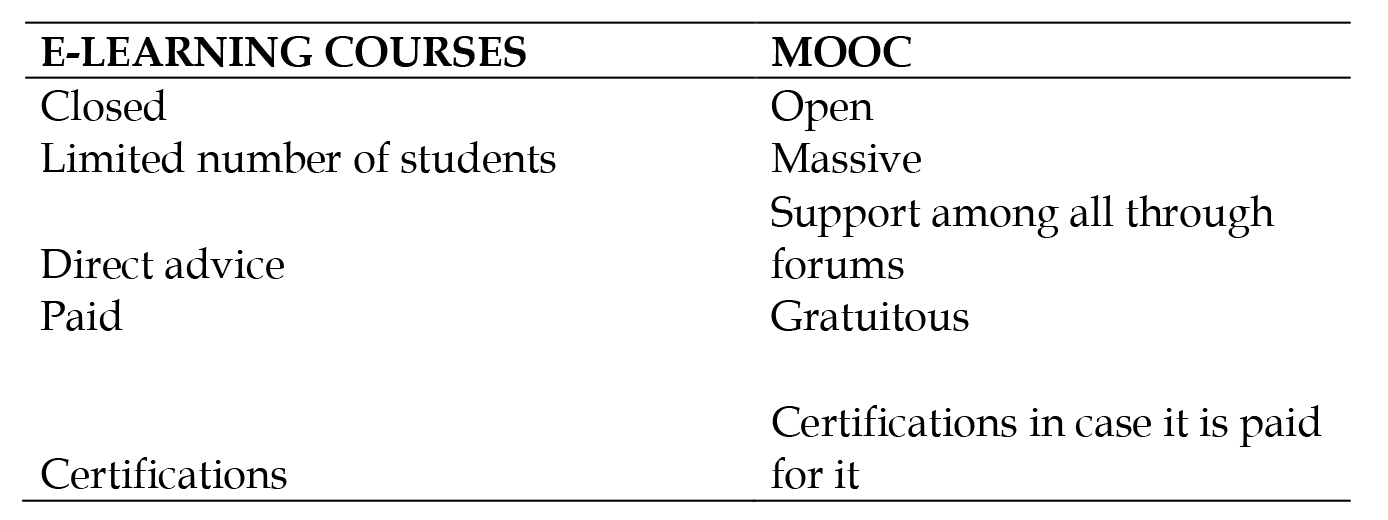
Source: Own elaboration
It is important to conceptualize the meaning of the initials that make up the word MOOC:
MASSIVE:
A MOOC differs from an open online course in the number of participants. MOOCs must provide a sustainable model for the masses and be designed for a mass audience, this is an extremely important point, since it has considerably different implications as compared to a common virtual course.
OPEN
MOOCs are positioned in the open education space. Although the term “open” can have many dimensions and interpretations, the essential feature of open education is that it eliminates barriers to education and MOOCs do.
ON-LINE
MOOCs are taught in a 100% virtual mode. At this point there is no discussion, they must be taught by this means if they want to reach that characteristic of mass and without barriers. What should you keep in mind?
COURSE
MOOC does not look like the courses you might possibly know. In this type of courses the most important thing is that the skill is developed and knowledge is acquired for personal and professional development, therefore the person establishes his own objectives and rhythm.
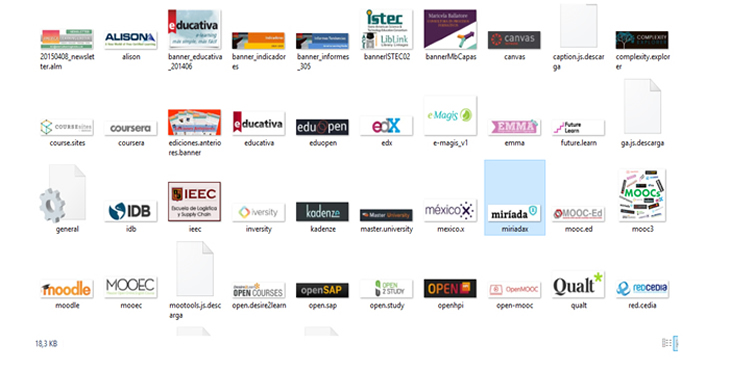
Gráfico 4: Plataformas MOOC a nivel mundial. Fuente: Learning (2017)
Each MOOC is unique and the experience acquired will depend on the subject and the instructor. Graph 4 shows the main platforms worldwide, in which each participant decides the best way to participate in a MOOC to reach their goals.
– For the most part, MOOCs follow the following contextual structure:
– Short videos
– Recommended articles and / or readings
– Participation in forums
– Participation in learning activities, short lessons, questions by units
MOOCs are based on the sociocognitive pedagogical model, where students construct meanings by themselves, as evidenced by the presence of the variables that characterize this theoretical model.
Despite this, as pointed out by Poy and Gonzales (2014), it has been observed how MOOC platforms have elements of pedagogical design based on behavioral models, as evidenced by the fact that those platforms that contain information to be transmitted through training in tasks through exercises, where the step to the next level of difficulty is determined in advance The main benefits of MOOCs are mainly generated by the following aspects: Their massive character to spread knowledge, the possibility of accessing education for people who, due to their scarce resources, have not been able to do so, the aggregation of social tools and modern and useful content, use of technology, people take advantage of nourishing their resume with new knowledge.
Regarding the university as an institution, much has been written and debated about the possible benefits of a MOOC. Above all, those who were pioneers may have gained popularity, beyond their university community, and when MOOCs have quality, it is clear that this is an attractive showcase and formula to improve the brand and reputation of a university and attract students. Learning (2017) indicates that it would also be necessary to objectify and see to what extent the students of a MOOC then become students or follow the conventional academic activity of that university, in which terms they speak to others about their learning experience in the MOOC, if they recommend it.
In terms of market volume, the market research company, MarketsandMarkets, recently published its report “Massive Open Online Course Market by Platform (CMOOC, XMOOC), Course (Humanities, Computer Science & Programming, Business Management, Education & Training), Service (Consulting, Implementation, Training & Support) & by Region - Global Forecast to 2020”, in which it foresees that the MOOC market could reach 8,500 million dollars in 2020 according to Learning (2017).
With all these attributes, the platforms have had a total success but not all of those who participate finish with a certification that validates their participation, in which various factors are involved, a study carried out on the users of the MOOC platform carried out in 2013 by the University of Stanford points out interesting conclusions about the differences in the profiles of students that are more likely to successfully conclude this type of course and that, in general terms, correspond to students of higher educational level, Americans or from countries with high levels of economic and industrial development, even pointing out “that designers should avoid excessive recourse to explanatory videos produces a greater difficulty for the monitoring of students especially if they are foreigners or with low level” (Kizilcec & Piech, 2013).
2. OBJECTIVES
The basic objective of the study is to know the connotation and importance that this educational revolution has had in students of the Faculty of Administrative Sciences of the University of Guayaquil and the contribution to their studies as a strength to expand and acquire new knowledge.
3. METHODOLOGY
In order to carry out this work, surveys were conducted in the city of Guayaquil to learn about citizens› appreciation of and participation in this type of courses, using an inductive and deductive methodology, «it is a method of reasoning that consists in taking general conclusions for particular explanations» (Bernal, 2006, page 56) . A quantitative approach will also be used, a statistical analysis of the data from the survey conducted in the city of Guayaquil will be made. The respective documentary research and historical data review were also carried out. The surveys were conducted in the city of Guayaquil, in the Faculty of Administrative Sciences of the University of Guayaquil, in the degree course on Commercial Engineering.
The sample consists of 120 students belonging to the second and fifth semesters of the Faculty who were shown these types of courses in some of the available pages and, according to their preferences, they optionally had the opportunity to take them and in some cases conclude them with much success.
4. DISCUSSION
The first question posed was in relation to participation Would you participate in free online courses? It was obtained that 75% would be willing but the remaining 25% reported that if courses were free they would not be of good quality.
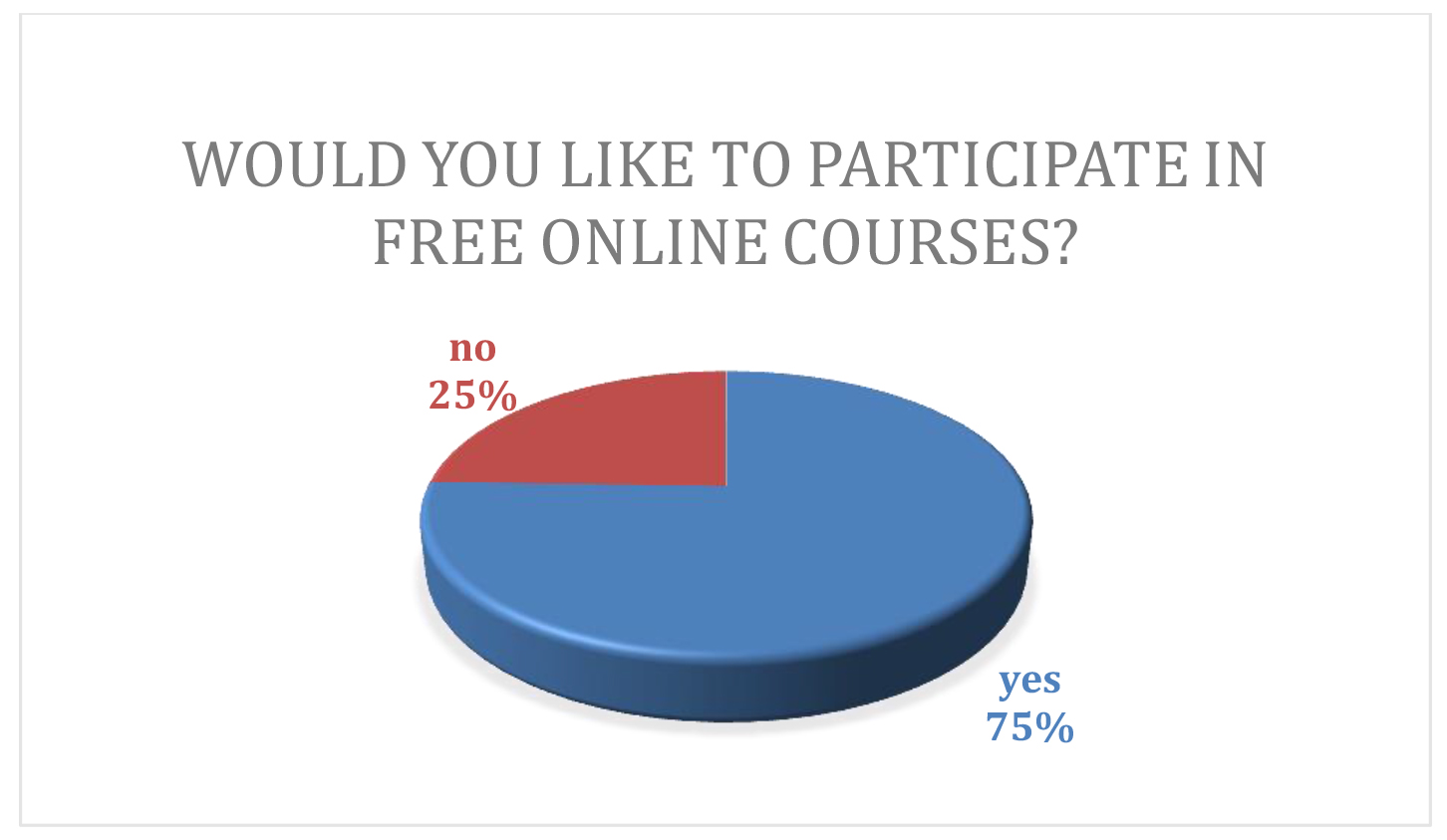
Graph 5: Results Question 1. Source: Own elaboration
The second question of this survey was asked to the participants How much time would you dedicate weekly to this type of courses?, the results being very positive with respect to dedicating from 1 to 5 hours per week, divided into 2 ranges and only 7% of the interviewees would be willing to dedicate a greater number of hours, as shown below:
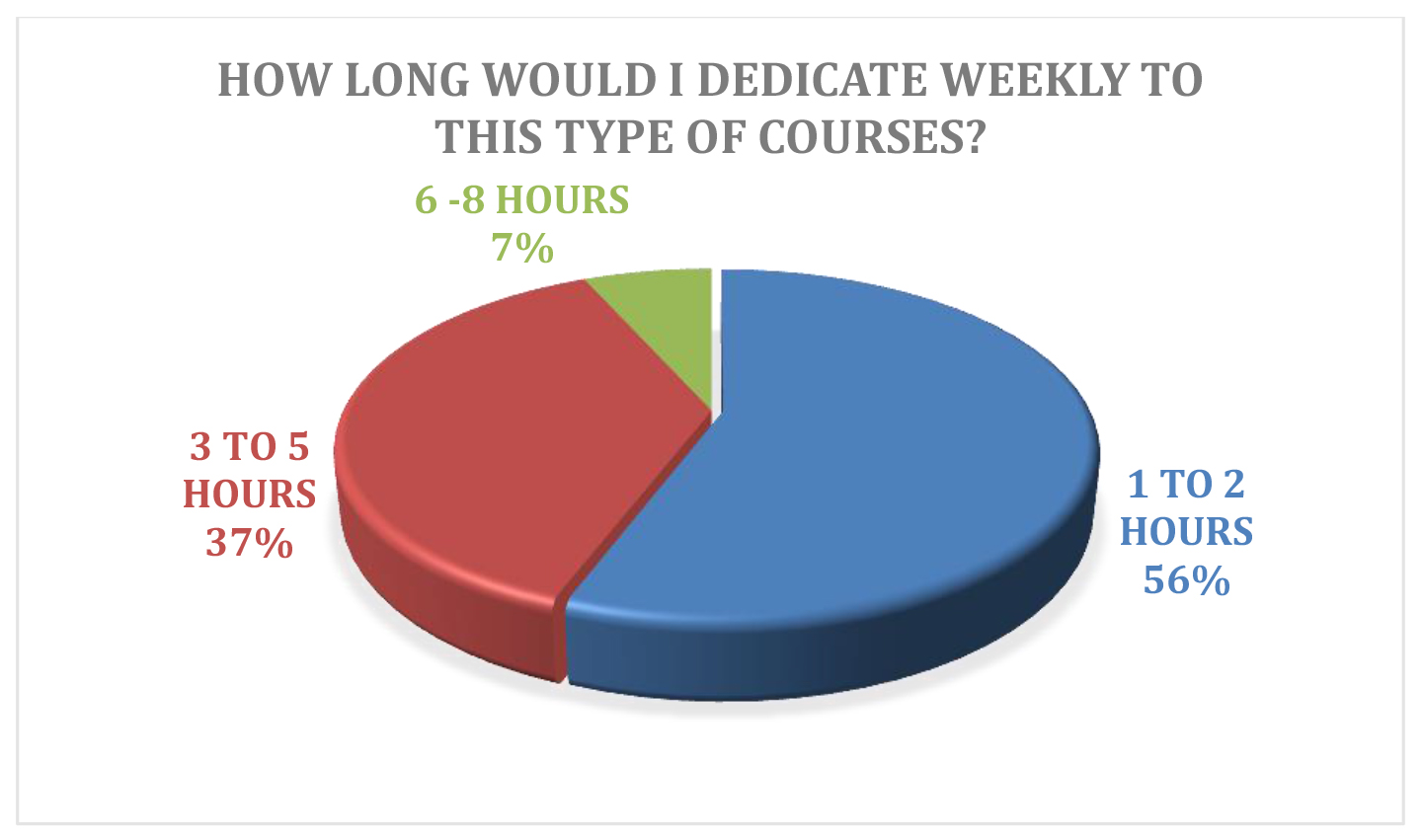
Graph 6: Results Question 2. Source: Own elaboration
The third question was related to the type of subject that the interviewee would study in a MOOC, to which a high percentage responded in technology, administration and sales issues. The rest of subjects a smaller percentage but that shows a demand for non-traditional subjects.
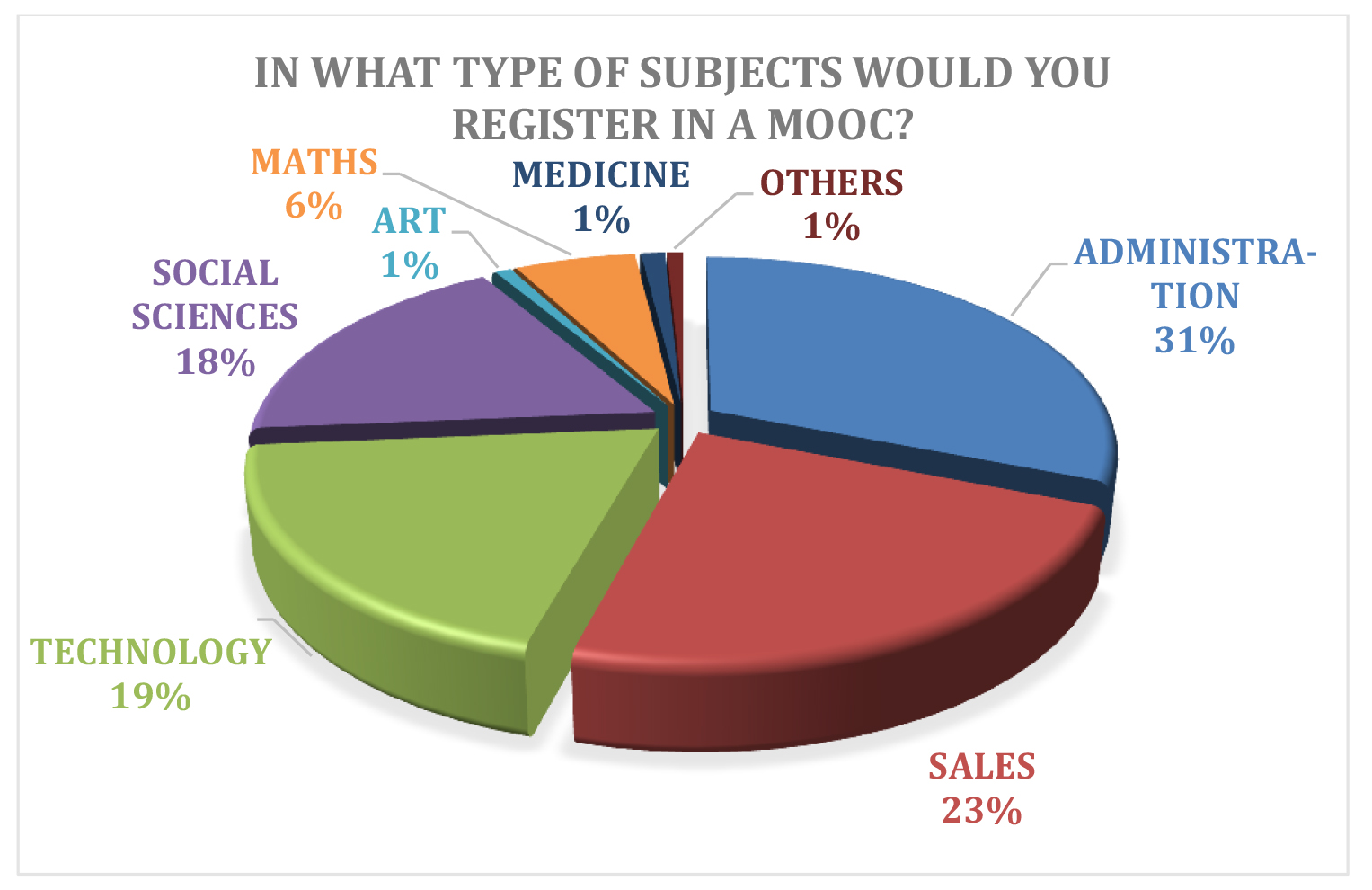
Graph 7: Results Question 3. Source: Own elaboration
Users were consulted about how much they would be willing to pay for a MOOC in the event of requiring the respective certification, to which respondents mostly answered that they would be willing to pay from $ 5 to $ 15, and only 6% would be willing to pay a value greater than $ 46.00. The ranges were established on the basis of the costs of the courses in platforms worldwide, some represent costs over $ 200, mainly because of the reputation of the university and the program they belong to, the average value is $ 50.00.

Graph 8: Results Question 4. Source: Own elaboration
The following question was related to the importance of taking a MOOC as a strengthening of administrative science topics and that the MOOC be classified by scales, to which respondents answered:
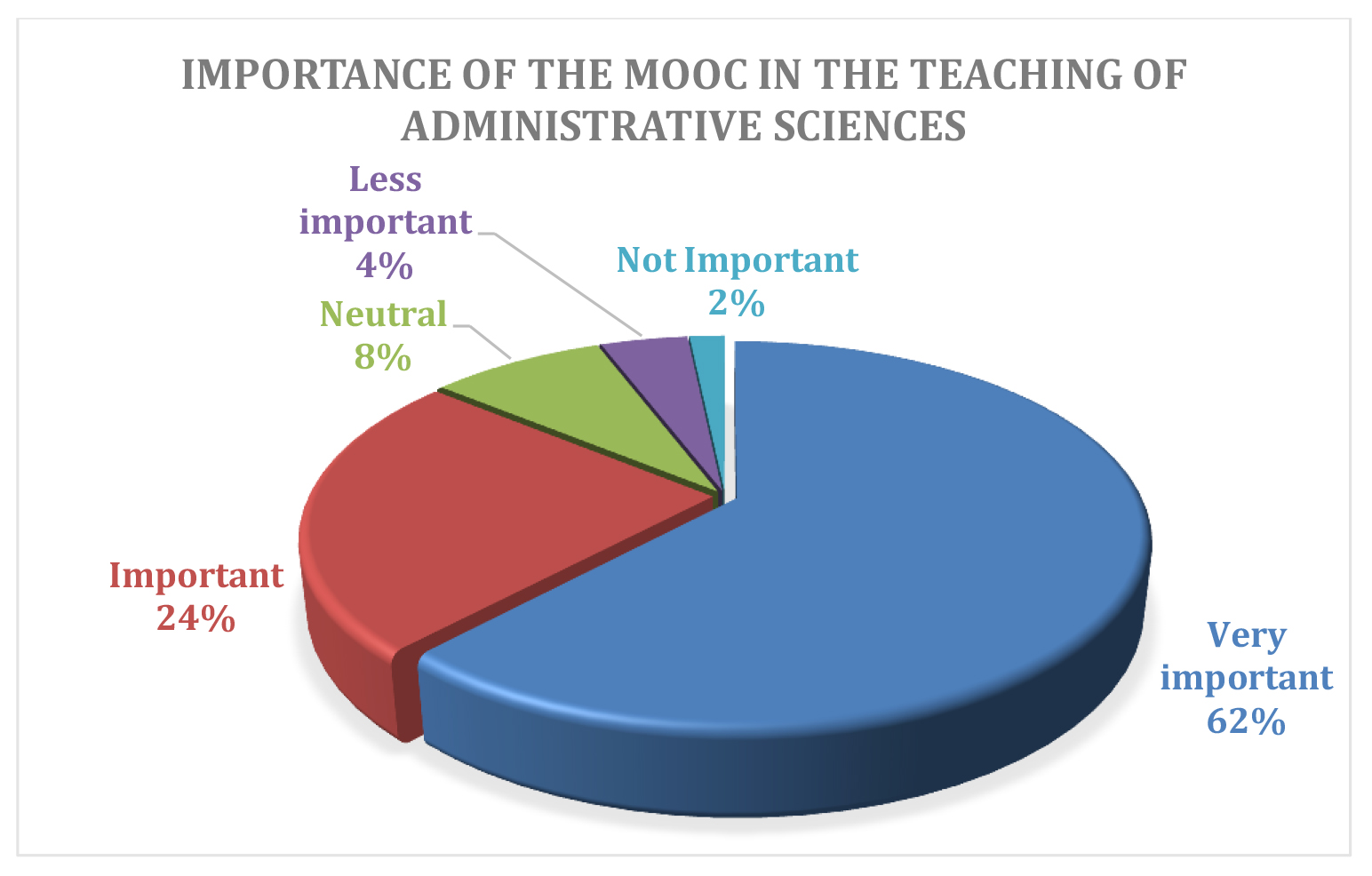
Graph 9: Results Question 5. Source: Own elaboration
A final question derived from the previous results and they were asked if they would like the enrollment in a MOOC to be part of the subjects’ didactics and to prepare essays or papers related to the selected topic. The results were that 67% of the interviewees would take them and report on their participation and accreditation and 33% said that it was not necessary, since they already took face-to-face lessons.
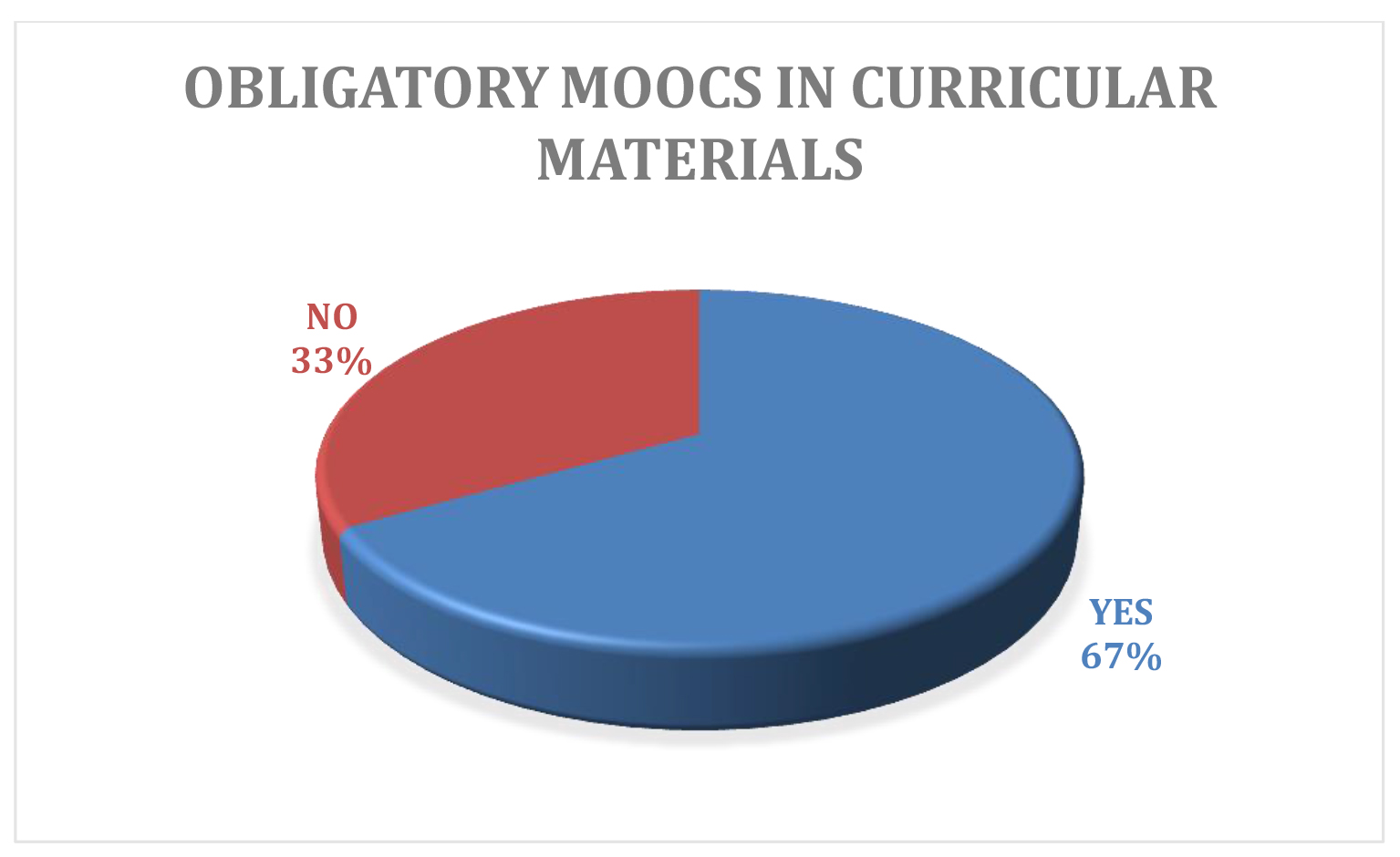
Graphic 10: Results Question 6. Source: Own elaboration
Basically, the analyzed group responds to the objective of the work in a positive way, in the important aspects 86% of the surveys indicate that the participation in a MOOC as support for their career is Very Important and Important, in the case of students, they all came to the conclusion that a course related to a topic of specific interest can be taken to broaden general concepts, such as Strategic Planning or Business Simulators.
The interesting thing about this piece of research was the vision it offered about knowledge of this innovation in education since many students did not know it and it can provide the necessary context for students to make the most of the available sources of learning, sources of collective creation, of publications and connection with people of other cultures who share common interests and as the new tendencies established at present Chiape, Hine, and Martínez (2015) define MOOC as a disruptive concept from a pedagogical perspective.
5. CONCLUSIONS
Although at present there are many MOOCs in the market and, depending on the provider, they have their own characteristics, the main platforms such as EDX, Coursera or Miríada have a lot of versatility and their gratuity makes them the first in the market, their exponents consolidate as the most important in the educational field. Their importance in the administrative sciences has been proven even by the high percentage of their composition worldwide, the analyzed panorama shows the congruence of science and the logic of the connections with which society works and in the current educational environment it is much more notorious and forceful because education is immersed in innovation and technology.
The educational environments are evolving, the inverted classroom, Education 2.0, Education 3.0, E-learning, among others are concepts that generate greater participation on the part of the student and this leads to a greater predisposition of the student to control their times and learning rhythms. Universities and institutions of higher education want to be integrated and consolidate in this educational space.
The study constituted a complementary prism in the generalization of concepts of interconnections, effects, cohesion and, in fact, the strength of the links that educational institutions link with their peers with the aim of providing, in this type of modality, a high-quality academic offer that exceeds the proposed expectations by raising inclusive, fair and relevant content. The epistemology is enriched with the analysis that can be generated from these data, the institutions of this platform increasingly contribute to the fields of knowledge and promote the integration of academic material of non-traditional topics, in which users they can enrich their curriculum, denoting their cooperation to culture and professional training.
The link with the sciences of administration denote the importance of the semantic differential addressed in the educational aspect, universities offer courses measured in different aspects and valued the same way, allowing the student to choose the one that fits their objectives and, based on this need and what the university offers, it is sought that students take the largest number of courses in the same institution, capturing the entire market available as checked by the offered levels that cover all possible areas of knowledge.
In short, one of the conditions that should be given more attention, in terms of the pedagogical design of MOOC platforms, mainly in administrative sciences as the axis of this piece of research, is the strategy of active involvement of the subject, this being one of the priority tasks currently for these Web environments. Norving (2017) clarifies that, with it, this type of academic offer will grow even more and improve its services.
REFERENCES
1. Bartolomé A, Steffens K (2015). ¿Son los MOOC una alternativa de aprendizaje? Comunicar, 91-99.
2. Bernal C (2006). METODOLOGÍA DE LA INVESTIGACIÓN: para administración, economía, humandades y ciencas sociales. Naucalpan, Edo. de México: Publicaciones Pearson Educación.
3. Chiape A, Hine N, Martínez J (2015). Literatura y práctica: una revisión crítica acerca de los MOOC. Revista Comunicar, 9-18.
4. EDX (1 de Julio de 2017). From EDX: https://www.edx.org/schools-partners
5. Kizilcec RF, Piech CS (2013). Deconstructing Disengagement: Analyzing Learner Subpopulations in Massive Open Online Courses. Stanford University Paper Series, 10.
6. Learning A (7 de Abril de 2017). American Learning & Media. From http://www.americalearningmedia.com/component/content/article/539-entrevistas/7368-modelo-aprendizaje-moocs-promueve-competencias-transversales-esenciales-
7. Medina R, Aguaded J (2013). La ayuda pedagógica en los MOOC, un nuevo enfoque de acción tutorial. @TIC, 30-39.
8. MoocLab (7 de Abril de 2017). Mooclab. From Mooclab: https://www.mooclab.club/
9. Poy R, Gonzales A (2014). Factores de éxito de los MOOC: algunas consideraciones críticas. RISTI.
10. Prensky M (2010). Teaching Digital Natives. California: Corwin Press.
11. Shah D (25 de Diciembre de 2016). By The Numbers: MOOCS in 2016. From https://www.class-central.com/report/mooc-stats-2016/
12. Shah D (21 de Diciembre de 2016). By The Numbers: MOOCS in 2016. From https://www.class-central.com/report/moocs-2015-stats/
13. TEC (2014). EDU TRENDS. Monterrey: Observatorio de Innovación.
14. Vásquez E (2013). El videoartículo: nuevo formato de divulgación en revistas científicas y su integración en MOOCs. Dossier, 83-91.
AUTHORS
Marjorie Marcela Acosta Véliz
Ecuadorian, Province of Guayas, Guayaquil city, Master in Business Administration and Management, Diploma in Management, Commercial Engineer with specialization in Finance, Specialist in Project and Cost Evaluation, Microsoft Office Specialist in Excel, Financial Management Program, Speaker and assistant in several international congresses with topics related to administration, marketing and higher education, more than 17 years of experience in the Steelworking University Teaching Sector in the Faculty of Administrative Sciences at the University of Guayaquil, Commercial Engineering degree in Administration and Marketing. Tutor and Reviewer of Undergraduate Thesis.
http://orcid.org/0000-0002-9462-1881
María Eugenia Jiménez Cercado
Ecuadorian, Province of Guayas, Guayaquil City, Master in Business Administration Mention in Human Resources and Marketing, Commercial Engineer with Specialty in Marketing, Speaker and assistant in several international congresses with topics related to administration and marketing. Professor at the Faculty of Administrative Sciences of the University of Guayaquil with more than 11 years of experience in the Business Management Engineering career. Certification of the English language FCE B2. Tutor and Reviewer of Undergraduate and Postgraduate Theses.
http://orcid.org/0000-0003-1404-6731